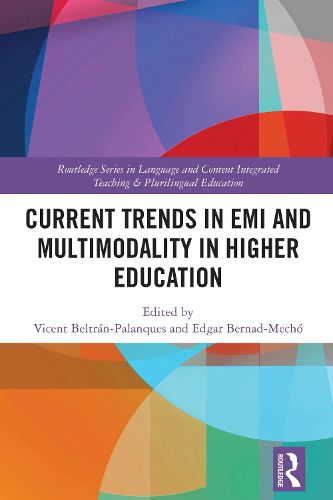Readings Newsletter
Become a Readings Member to make your shopping experience even easier.
Sign in or sign up for free!
You’re not far away from qualifying for FREE standard shipping within Australia
You’ve qualified for FREE standard shipping within Australia
The cart is loading…






Looking at both English Medium Instruction (EMI) and multimodality in higher education, this edited volume bridges the gap between the two contexts by offering various new insights into fundamentals in multilingual education, EMI discourse and current teaching practices in internationalised contexts. Current demands in communication, especially in higher-education contexts, require examining EMI from a multimodal perspective with the aim of giving explicit attention to modern discourse practices. The contributors reflect on the principles guiding EMI and multimodality and their application in higher education using both practical examples and data-driven evidences. They discuss EMI multimodal discourse from an empirical perspective to unveil communicative practices in internationalised higher-education contexts; and exemplify classroom applications and ESP and EAP pedagogical practices that promote multimodal competence in higher education. The contributors provide solid theoretical foundations, key principles, research evidence and pedagogical implications that inform current methodologies and practices for EMI, ESP and EAP, as well as multimodality in higher education. This volume on EMI and multimodality in higher education will have broad appeal for researchers worldwide from various fields of expertise within education and applied linguistics.
$9.00 standard shipping within Australia
FREE standard shipping within Australia for orders over $100.00
Express & International shipping calculated at checkout
Looking at both English Medium Instruction (EMI) and multimodality in higher education, this edited volume bridges the gap between the two contexts by offering various new insights into fundamentals in multilingual education, EMI discourse and current teaching practices in internationalised contexts. Current demands in communication, especially in higher-education contexts, require examining EMI from a multimodal perspective with the aim of giving explicit attention to modern discourse practices. The contributors reflect on the principles guiding EMI and multimodality and their application in higher education using both practical examples and data-driven evidences. They discuss EMI multimodal discourse from an empirical perspective to unveil communicative practices in internationalised higher-education contexts; and exemplify classroom applications and ESP and EAP pedagogical practices that promote multimodal competence in higher education. The contributors provide solid theoretical foundations, key principles, research evidence and pedagogical implications that inform current methodologies and practices for EMI, ESP and EAP, as well as multimodality in higher education. This volume on EMI and multimodality in higher education will have broad appeal for researchers worldwide from various fields of expertise within education and applied linguistics.